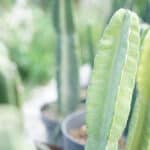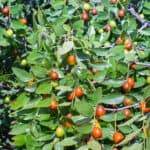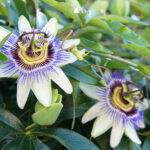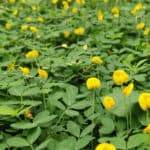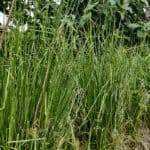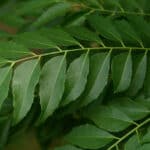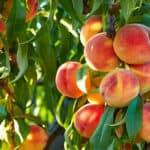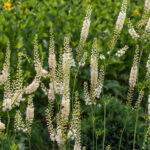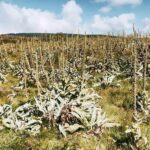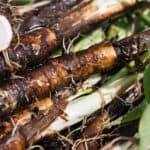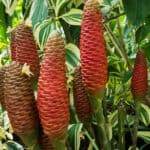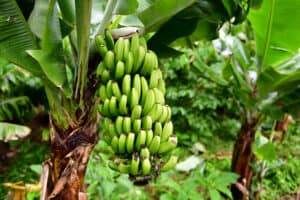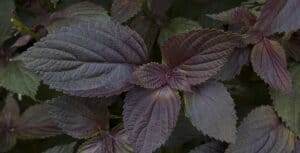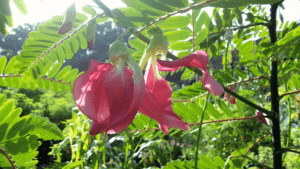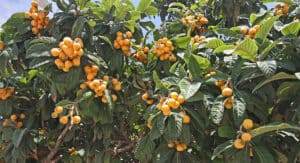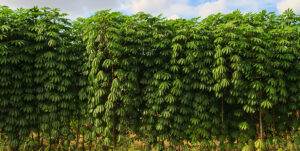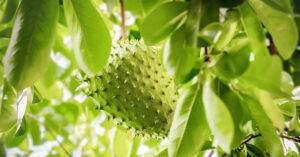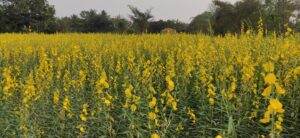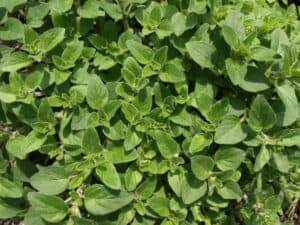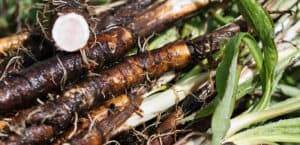Figs, Trees with their Roots Deeply Entwined in our History …
Family: Moraceae (same family as the Mulberry)
Summer is here, and as I walk around the orchard, there’s a sickly sweet heaviness in the air, it slows me down, and I breathe in deeply. Basket in hand, I walk under the canopy of the grandmother fig and start climbing. I can smell that there are some figs ready, well before I can see them!
The Ficus Carica is a tree to be highly respected, it has led an incredible journey alongside us as humans. Scientists recently found proof that approximately 11,400 years ago, in the ruins of a prehistoric village in Jericho, figs were already under cultivation. This predates agriculture such as grain crops by around 1000 years. The fig could be one of the oldest examples of natural farming, and how humans can directly impact their environment. The cultivation of figs continues to spread to this day, and in some regions they are seen as a luxury, whereas in others they are not appreciated enough!
A wave of cultivation spread to all the districts around the Aegean Sea and further. The Greeks are said to have received it from Caria, Turkey, this helped to give the fig its botanical name Ficus Carica. Due to their ease, flexibility and abundance, figs were a fundamental source of nutrition for thousands of years.
The Ficus Genera has around 800 species, and is considered a keystone species. Having an extremely important role to play in biodiversity, they provide a habitat and food source for many insects, birds, and other animals. With the diversity they attract, figs have the ability to spread far and wide. They are also extremely tolerant of weather extremes, including cold, heat and drought. I see fig trees as a great opportunity to bring biodiversity to a piece of land, especially in the dry climates.
Figs as Medicine
All parts of the tree have been used for thousands of years in Traditional Medicine and it is being explored extensively in modern medicine. Different proportions and benefits are dependent on whether the fruit is fresh or dry. Three Fresh figs contain half our daily intake of fibre as well as healthy amounts of calcium, potassium, phosphorus, and iron and many other nutrients.
Pharmacological Properties of Figs
- Anti-inflammatory activity
- Anti-oxidant activity
- Anti-bacterial activity
- Anti-acne activity
- Antipyretic activity
- Anti-hyperlipidemic activity
- Anti-cancerous activity
- Hepatoprotective activity
- Hypoglycemic activity
- Nephroprotective activity
The Mind-Blowing Sex Life of Figs
When it comes to the sex life of figs, it can be complicated. But lets just say there are four “types”.
- Caprifig – The caprifig has male and female flowers within the syconium, therefore it is considered the “male” fig.
- Smyrna fig – This fig only has female flowers, it needs cross-pollination from wasps coming from caprifigs to develop normally.
- San Pedro – This fig also has only female flowers. The Breba crop (the one that matures over the cooler months) needs no pollination to produce fruit. However, the second crop is commonly dependent on pollination.
- Common-type: The flowers are all female and are parthenocarpic, they need no pollination to produce fruit.
So now that you know a little about the intimacy of figs, we can talk about wasps.
Fig Pollination: Carnivorous or a Mutual Relationship?
Have you heard the story of the fig and the wasp? It’s a big part of the reason some figs become so tasty. I will try to explain it simply, but there is a lot of circular fertilisation, caprification, pollination and probably much more. It’s all happening between wasps and wasps, wasps and figs, also figs and figs, and of course the figs and the wasps… I’m sure you’ll understand by the end.
Now the fig is not your typical fruit, technically it is not a true fruit. The fig we eat is actually a syconium. All of the funny little hairs, or eventually seeds, on the inside are actually flowers . So if you think of the outside of the fig as the stem, and all the little flowers as individuals, we are eating the fleshy stem with a bunch of juicy flowers.
So the above description is about the female flower that we eat, but the interesting story starts with the Caprifig! The “male” version of the fig. It is a wild fig (Ficus Carica sylvestris). From the outside, this fig doesn’t appear much different than a “female”. However, when you open a caprifig, you will see it is much drier on the inside than the figs you know and love. There are many flowers inside, and the ones closer to the ostiole (the opening at the bottom of the fig) are the male flowers.
So now the wasps are in the story, please keep in mind, most of this process happens over a matter of days. The fig wasps in this case (Blastophaga psenes) use the caprifig as a nursery for their young. A mature female wasp comes to the flowers inside the caprifig and lays her eggs. Male wasps spend the majority of their life inside the fig because they don’t have any wings. The main responsibility of the male wasp is to fertilise the female wasps while they are still in their “natal gall”. When the females come out of their natal gall, they are already fertile and ready to explore the outside world. They want to find another fig to start a family of their own….
So begins the short story of Vespa the fig wasp… She is ready to explore the world. But first, she must squeeze her way out of the hole in the bottom of the caprifig, called the ostiole. In this process, she is covered in dusty pollen from the male flowers which are situated in the ostiole. So away she flies, trying to pick up the scent of a place to call home. (The important part is, all of the other trees in the orchard are our desirable edible “female” figs. These female figs are ready to be pollinated, so they release a sweet scent.)
Vespa picks up on this scent, she finds her perfect fig and squeezes her way through the ostiole, it is a much tighter squeeze than the caprifig she remembers from earlier in the day. Vespa feels very good about her new place, but she has been tricked, she loses her wings and antennae in the process of entry. When she enters she realises the flowers in these female figs are not really compatible with her egg laying needs, but her pollen covered body has fertilised the female flowers within this fig. By this stage she is very tired, so she decides to go to sleep. By spreading the pollen, Vespa has helped the fig to fully develop, producing its crunchy seeds, with their nutty flavours and juicy texture, but she will go no further. With the ostiole closed, the fig consumes Vespa with an enzyme called ficin, and so she becomes one with the fig.
Click here for more information on fig pollination.
Fig propagation
Cuttings are the most common way of propagating figs to ensure the variety and characteristics are retained. The cutting is best taken when the tree is coming out of dormancy after the last frost has passed.
With sterilized secateurs, take a 6 to 8 inch, dormant, hardwood cutting from your favorite tree. The hardwood is the brown wood, which is normally already 2 years old or more. More importantly, try to make sure the cutting contains 3 or more nodes. (Nodes are the growing points where the leaves, branches, fruit and roots come from.) Rooting hormone is optional, then you can bury the cutting in your potting medium. I like to have at least 2 nodes under the soil as it increases the chances of success.
If you want to try something fun, you can even plant a fig branch upside down! Have you ever seen a fig tree that has an extremely open branch structure, one that you want to lay down in? If you plant the fig cutting upside down, the roots and branches are still able to form, but the branches are forced to grow downwards a little before they are able to grow upwards. This results in the first branches being much more horizontal in growth. Surely, it will take some more training, but with this method, it is much easier to get the open canopy you desire.
Growth & Care
While figs are generally considered a Mediterranean plant, they are very versatile and widespread. Figs enjoy full sun to bear the best fruit, but in the mediterranean climate the heat intensity seems to be enough to produce figs even on trees that are well shaded. However, there are so many cultivars now, being grown in tropical, subtropical and temperate climates. Figs don’t enjoy too much fertiliser, a light dose of organic manure or compost if the fig is showing signs of chlorosis should be enough. An excess will cause them problems like excess branch growth resulting in lack of fruit, branch splitting, and other problems.
Irrigation
In many Mediterranean countries figs are grown as rain-fed. However, the decision to irrigate is based on whether it is necessary to produce a good crop. Care should be taken, as excess moisture at the wrong time can lead to fig splitting, and watery tasteless fruit. For this reason, the perfect climates to grow figs are those which don’t receive rainfall during the fruiting period.
Pruning
Figs will be fine without pruning. However, for ease of harvest, it is best to maintain a tree that is easy to access. Selecting 3 to 4 main branches at a young age can be helpful, as the tree gets larger, removing some of the central branches which crowd the canopy. This technique is actually very similar to the Wineglass technique of the Olive Tree. (link article) As the tree gets older, it also helps to remove those branches which grow toward the ground, blocking access to the centre of the tree.
Growing figs as an “Espalier” against a south facing wall is also common in cool climates, to assist with a longer season and fruit ripening.
Harvesting Figs
Harvesting figs is a fun experience even better on a small scale, when it is picking season there is normally an abundance of figs. Depending on the varieties, sometimes you get the breba crop. The breba crop develop on the past years growth, and ripen first. The main crop develop on the current years growth, and will ripen later.
It’s true, they are mature at different times! Some are for today, some for tomorrow and some for next week. Some are better suited for drying, and some are for eating fresh. It helps to know the varieties you have so you are able to estimate when you will have the abundance, and what you will do with them!
I won’t go too much into varieties as there is a whole world of figs out there, with the same variety changing names depending on the country or region. There are many fig lovers out there, with databases and forums for you to explore.
Picking figs is quite straightforward, but handling is tricky. In my opinion, the best figs generally do not transport well, so they are best eaten very fresh! Some figs “pick” better than others. If you are picking for a market you want to make sure not to break the neck of the fig, this will ensure you can keep it fresh for longer and don’t attract any unwanted visitors. If the figs are not coming away from the tree easily, they are probably not quite ripe yet.
Processing & Utilizing
In the Mediterranean region, the fig is so widely used both fresh and dried. The opportunities are endless. Jams and chutneys, fresh, baked, grilled, salads and as well as a mountain of cakes and dessert recipes.
The fig was commonly used as a sugar source before sugar cane was available. The figs probably gave enough sweetness, but here in Portugal they use both. The desserts are extremely sweet!
Concluding thoughts
If your climate allows figs, there is definitely a variety for you. If you don’t eat them, someone or something will. Especially for dry climates, it is a tree that gives a lot for very little effort and boosts biodiversity. The ease of propagation is also a great benefit for those with the space to plant, or for those wanting to spread their favourite variety far and wide.











